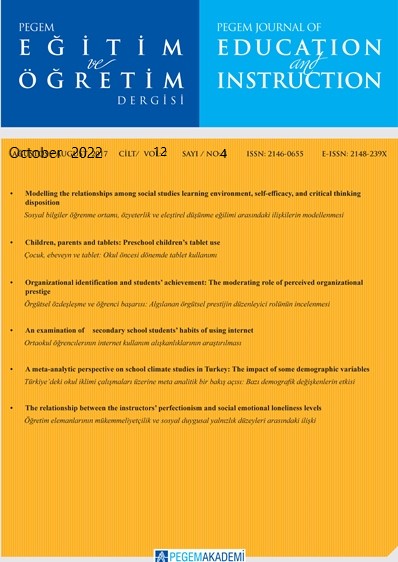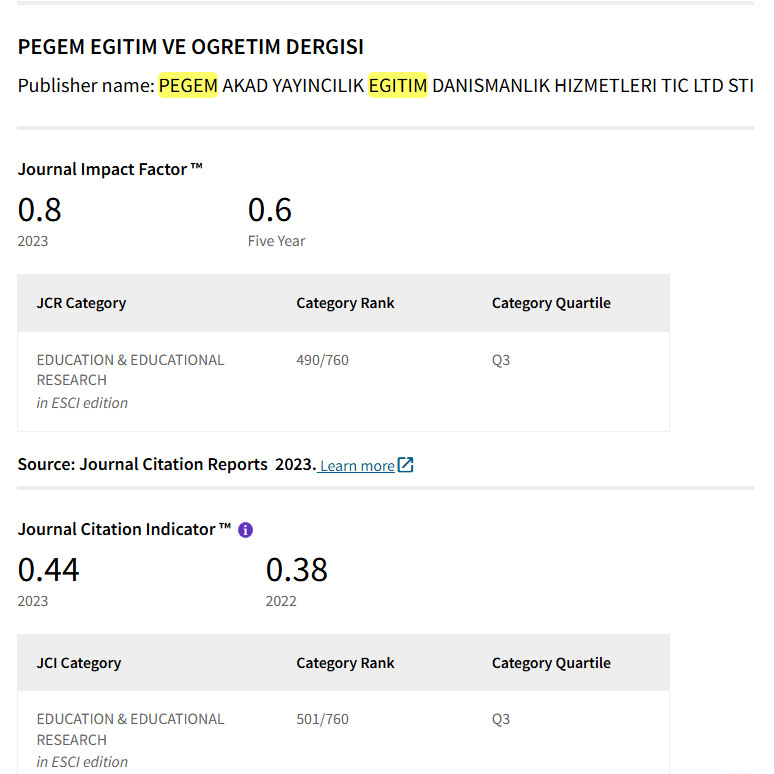Lexiroom: Web-based learning media to increase phonological awareness for Indonesian dyslexic children
DOI:
https://doi.org/10.47750/pegegog.12.04.31Keywords:
Dyslexia, phonological awareness, LexiroomAbstract
Children with dyslexia may have adequate cognitive abilities but they often show considerable difficulties in reading where they are less accurate in spelling and pronouncing words. Phonological deficit is the main cause of reading disorders in dyslexic children, and hence, developing competence in phonological awareness is important to increase children's sensitivity to the structure of a word. This study aims to develop a web-based assistive technology called Lexiroom for Indonesian dyslexic children to increase their phonological awareness. This includes the aspects of syllable awareness, segmenting words into sounds, and manipulating sounds. As a preliminary study, the proposed learning media is implemented using a single subject design with a research and development approach. The results show that Lexiroom can improve the phonological awareness of a child diagnosed with dyslexia.
Downloads
References
Banai, K., & Ahissar, M. (2004). Poor Frequency Discrimination Probes Dyslexics with Particularly Impaired Working Memory. Audiology and Neurotology, 9(6), 328–340. https://doi.org/10.1159/000081282
Berget, G., Mulvey, F., & Sandnes, F. E. (2016). Is visual content in textual search interfaces beneficial to dyslexic users? International Journal of Human-Computer Studies, 92–93, 17–29. https://doi.org/10.1016/J.IJHCS.2016.04.006
Branch, R. M. (2009). No Title. Instructional Design: The ADDIE Approach. Springer Science & Business Media.
Creswell, J. W. (2013). No Title. Steps in Conducting a Scholarly Mixed Methods Study. https://digitalcommons.unl.edu/dberspeakers/48/
De Santana, V. F., De Oliveira, R., Almeida, L. D. A., & Baranauskas, M. C. C. (2012). Web accessibility and people with dyslexia: A survey on techniques and guidelines. W4A 2012 - International Cross-Disciplinary Conference on Web Accessibility. https://doi.org/10.1145/2207016.2207047
Evett, L., & Brown, D. (2005). Text formats and web design for visually impaired and dyslexic readers — Clear Text for All. 17, 453–472. https://doi.org/10.1016/j.intcom.2005.04.001
Gathercole, S. E., & Pickering, S. J. (2000). Working memory deficits in children with low achievements in the national curriculum at 7 years of age. 177–194.
Heinich, R., Molenda, M., Russell, J. D., and Smaldino, S. E. (2002). No Title. Instructional Media and the New Technologies of Instruction (7th Ed.). Englewood Cliff, NJ: Prentice Hall.
Kast, M., Baschera, G. M., Gross, M., Jäncke, L., & Meyer, M. (2011). Computer-based learning of spelling skills in children with and without dyslexia. Annals of Dyslexia 2011 61:2, 61(2), 177–200. https://doi.org/10.1007/S11881-011-0052-2
Kous, K., & Polančič, G. (2019). Empirical Insights of Individual Website Adjustments for People with Dyslexia. Sensors 2019, Vol. 19, Page 2235, 19(10), 2235. https://doi.org/10.3390/S19102235
Nation, K., & Snowling, M. J. (2004). Beyond phonological skills: Broader language skills contribute to the development of reading. Journal of Research in Reading, 27(4), 342–356. https://doi.org/10.1111/j.1467-9817.2004.00238.x
Neuman, S. B., & McCormick, S. (1995). Single-subject experimental research : applications for literacy. 179.
Nguyen, H. T. T. (2021). Boosting Motivation to Help Students to Overcome Online Learning Barriers in Covid-19 Pandemic: A Case Study. 15(10).
Pennington, B. F., Van Orden, G., Kirson, D., & Haith, M. (1991). What is the causal relation between verbal STM problems and dyslexia? In Phonological processes in literacy: A tribute to Isabelle Y. Liberman. (pp. 173–186). Lawrence Erlbaum Associates, Inc.
Purkayastha, S., Nehete, N., & Purkayastha, J. (2012). Dyscover - An Orton-Gillingham approach inspired multi-sensory learning application for dyslexic children. Proceedings of the 2012 World Congress on Information and Communication Technologies, WICT 2012, 685–690. https://doi.org/10.1109/WICT.2012.6409163
Rello, L., & Bigham, J. P. (2017). No Title. Good Background Colors for Readers: A Study of People with and without Dyslexia. In Proceedings of the 19th International ACM SIGACCESS Conference on Computers and Accessibility, 72–80.
Rello, L. (2014). Design of Word Exercises for Children with Dyslexia. Procedia Computer Science, 27, 74–83. https://doi.org/10.1016/J.PROCS.2014.02.010
Risqi, M. (2015). LexiPal: Design, Implementation and Evaluation of Gamification on Learning Application for Dyslexia. International Journal of Computer Applications, 131(7), 37–43. https://doi.org/10.5120/ijca2015907416
Setyadi, A., & Wasisto, D. (2018). No Title. Sifat Fungsional Dan ManfaatPasangan MinimalFonem Dalam Pembelajaran Fonologi Bahasa Indonesia. Laporan Penelitian. Fak. Ilmu Budaya Undip, Semarang.
Shaughnessy, John J, E. B. Z. & J. S. Z. (2003). No Title. Research Methods in Psychology International Edition-6th. New York: Mc.Grow Hill.
Studies, I. J. H., Berget, G., Mulvey, F., & Eika, F. (2016). Is visual content in textual search interfaces bene fi cial to dyslexic users ? Journal of Human Computer Studies, 92–93, 17–29. https://doi.org/10.1016/j.ijhcs.2016.04.006
Verhagen, J., & Leseman, P. (2016). How do verbal short-term memory and working memory relate to the acquisition of vocabulary and grammar? A comparison between first and second language learners. Journal of Experimental Child Psychology, 141, 65–82. https://doi.org/10.1016/J.JECP.2015.06.015
Downloads
Published
How to Cite
Issue
Section
License
Copyright (c) 2022 Pegem Journal of Education and Instruction

This work is licensed under a Creative Commons Attribution-NonCommercial 4.0 International License.
Attribution — You must give appropriate credit, provide a link to the license, and indicate if changes were made. You may do so in any reasonable manner, but not in any way that suggests the licensor endorses you or your use.
NonCommercial — You may not use the material for commercial purposes.
No additional restrictions — You may not apply legal terms or technological measures that legally restrict others from doing anything the license permits.




